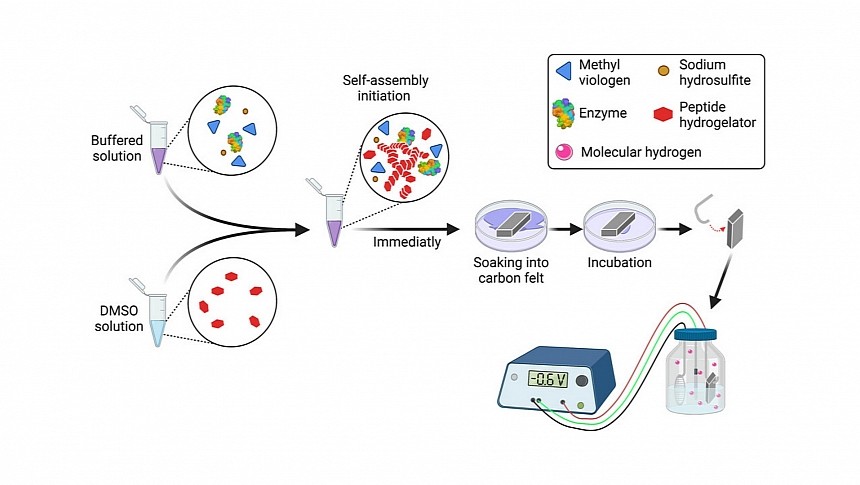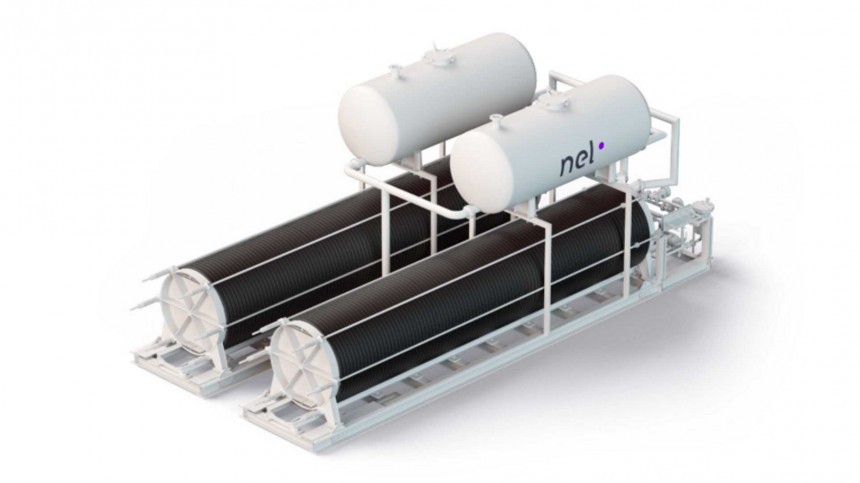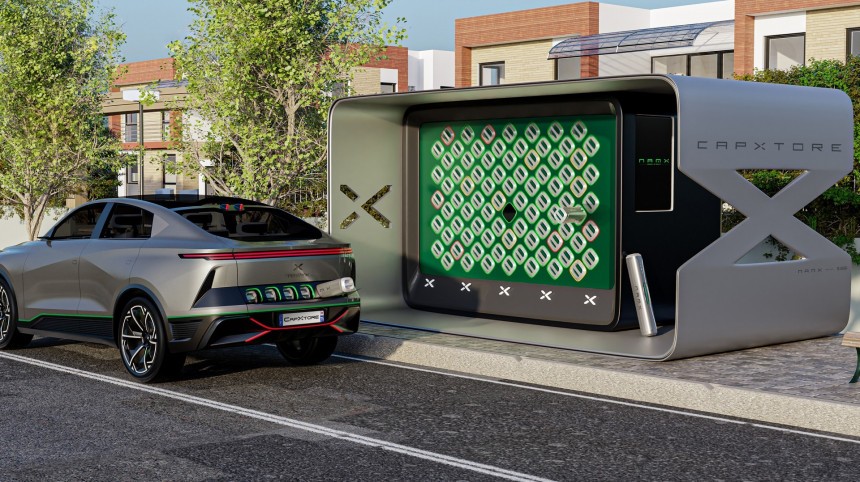There are two main arguments against hydrogen use in transportation. The first is that it is mostly generated from fossil fuels, which does not make it helpful against climate change. When it is genuinely green, it is obtained through electrolysis, a process that is only 70% to 80% efficient. That's not bad compared to internal combustion engines (ICEs), but fuel cell detractors use that to bash them anyway. Scientists at Tel Aviv University plan to kill that argument with a method that is over 90% efficient in generating green hydrogen.
The doctoral student Itzhak Grinberg and Dr. Oren Ben-Zvi explored the fact that photosynthesis breaks water into oxygen and hydrogen to try to reproduce the method plants adopt to do that. Microscopic organisms – probably some sort of algae – helped them with the enzymes that became the key to the idea they developed with the guidance of professors Iftach Yacoby and Lihi Adler-Abramovich. Their study was published in the June edition of Carbon Energy.
In a plant, the sun powers the enzyme that decomposes the water molecules into gases – called hydrogenase. The solution the Israeli scientists developed was to replace the sun's power with electricity. An electrode feeds the enzymes, but the electric charge repels them. What Grinberg and Ben-Zvi did was create a chemical treatment that prevented that: a hydrogel mixed with hydrogenase.
The researchers were pretty happy with the material they created because "the gel assembles itself." According to Adler-Abramovich, when it is placed in water, it makes nanometric fibers that hold hydrogenase in place. These materials are much cheaper than the platinum that electrolyzers have to use, among other precious metals. The hydrogen is also apparently produced with any kind of water, not only distilled water, as electrolyzers demand. The researchers said salt water is more beneficial to the enzyme to work, for example. That makes green hydrogen production much cheaper, without the need for any secondary process.
According to these scientists, it can cost 15 times more than gray hydrogen, which is produced from natural gas. Hydrogen can also be made from coal in a process called gasification – that's black or brown hydrogen. The scientists said gray, black, and brown hydrogen release 9 to 12 tons of carbon dioxide for each ton of hydrogen produced. Yet, they correspond to 95% of all hydrogen currently produced worldwide for agricultural and industrial needs. Even if this green hydrogen does not help move a vehicle, it is a welcome way to curb the production of the gray and black kinds.
Currently, the hydrogen refueling infrastructure does not increase because green hydrogen prices are too high. In June, Alexander Vlaskamp warned that hydrogen costs four to five times more than it would be acceptable for truck buyers to use it. Although the MAN CEO has to justify why Volkswagen is betting so heavily on batteries, the green hydrogen cost was something that needed to be solved quickly. The Israeli production method may be the answer that can solve this once and for all. We just need to have a more refined and commercially usable system to confirm the benefits this idea may bring.
If the prices really get more competitive, energy solar and wind farms may dedicate to producing hydrogen when there is no demand for the electricity they generate. That's a better idea than spending millions of dollars on expensive stationary storage systems: these batteries could have better uses in vehicles or houses. Hydrogen storage would still be a problem unless the gas was transformed into synthetic fuel. Hopefully, another scientific breakthrough could address that as soon as possible. We also have another idea floating around that may help solve that.
NamX wants its first vehicle – the HUV – to use swappable hydrogen capsules that can be bought anywhere. If these capsules could be refilled directly from one of the production stations, the storage problem woulxd be quickly solved. Toyota is investigating a similar solution. If we can produce green hydrogen at reasonable prices, that will be a good starting point.
It may also be the case that we have to develop vehicles in a different way. Riversimple proposed that when it argued that we are currently trying to make fuel cells fit the cars we already have, just like some carmakers tried to use internal combustion engine (ICE) platforms to make electric vehicles. It did not work. FCEVs have to be conceived around fuel cells and not the other way around. If you check the Toyota Mirai and the Hyundai NEXO, they are the perfect example of what Riversimple tried to demonstrate: they look like ordinary vehicles with motors and a fuel cell instead of a combustion engine and a fuel tank. It makes sense that an established automaker will try to keep things as they are, but that will bite them back when competitors find a better way to do that. The Israeli scientists may have found precisely what was missing to kick this off. Find yourself a comfortable seat to follow how everything unfolds from here.
In a plant, the sun powers the enzyme that decomposes the water molecules into gases – called hydrogenase. The solution the Israeli scientists developed was to replace the sun's power with electricity. An electrode feeds the enzymes, but the electric charge repels them. What Grinberg and Ben-Zvi did was create a chemical treatment that prevented that: a hydrogel mixed with hydrogenase.
The researchers were pretty happy with the material they created because "the gel assembles itself." According to Adler-Abramovich, when it is placed in water, it makes nanometric fibers that hold hydrogenase in place. These materials are much cheaper than the platinum that electrolyzers have to use, among other precious metals. The hydrogen is also apparently produced with any kind of water, not only distilled water, as electrolyzers demand. The researchers said salt water is more beneficial to the enzyme to work, for example. That makes green hydrogen production much cheaper, without the need for any secondary process.
Currently, the hydrogen refueling infrastructure does not increase because green hydrogen prices are too high. In June, Alexander Vlaskamp warned that hydrogen costs four to five times more than it would be acceptable for truck buyers to use it. Although the MAN CEO has to justify why Volkswagen is betting so heavily on batteries, the green hydrogen cost was something that needed to be solved quickly. The Israeli production method may be the answer that can solve this once and for all. We just need to have a more refined and commercially usable system to confirm the benefits this idea may bring.
If the prices really get more competitive, energy solar and wind farms may dedicate to producing hydrogen when there is no demand for the electricity they generate. That's a better idea than spending millions of dollars on expensive stationary storage systems: these batteries could have better uses in vehicles or houses. Hydrogen storage would still be a problem unless the gas was transformed into synthetic fuel. Hopefully, another scientific breakthrough could address that as soon as possible. We also have another idea floating around that may help solve that.
It may also be the case that we have to develop vehicles in a different way. Riversimple proposed that when it argued that we are currently trying to make fuel cells fit the cars we already have, just like some carmakers tried to use internal combustion engine (ICE) platforms to make electric vehicles. It did not work. FCEVs have to be conceived around fuel cells and not the other way around. If you check the Toyota Mirai and the Hyundai NEXO, they are the perfect example of what Riversimple tried to demonstrate: they look like ordinary vehicles with motors and a fuel cell instead of a combustion engine and a fuel tank. It makes sense that an established automaker will try to keep things as they are, but that will bite them back when competitors find a better way to do that. The Israeli scientists may have found precisely what was missing to kick this off. Find yourself a comfortable seat to follow how everything unfolds from here.







































































